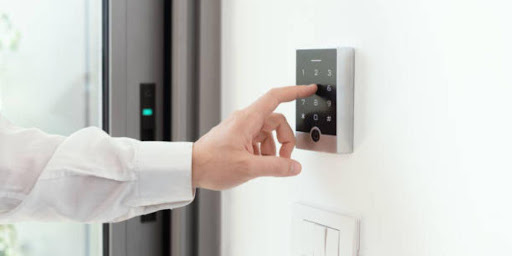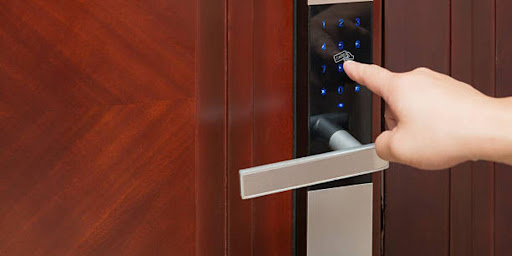Power Articles
Industry Elevating Content
Incorporating Smart Technology in Windows and Doors for Improved Functionality

PowerArticles
July 30, 2023
In the fast-paced digital era, the integration of smart technology has revolutionized various aspects of our lives, and now it extends its transformative touch to the very foundation of our homes. This introduction delves into the captivating realm of incorporating smart technology in windows and doors, where cutting-edge innovations converge with traditional elements to offer a seamless fusion of style, security, and convenience. By exploring the myriad ways in which these intelligent systems enhance functionality, efficiency, and user experience, we embark on an illuminating journey that unveils the boundless potential of smart windows and doors to shape the future of modern living.
Understanding Smart Technology in Windows and Doors
Smart technology refers to the integration of advanced electronics and intelligent systems into everyday objects, including windows and doors. In the context of windows and doors, smart technology aims to enhance functionality, convenience, and energy efficiency. These intelligent systems are designed to provide seamless automation, control, and connectivity to create a more comfortable and secure living environment.
Components and Features of Smart Windows and Doors
Sensors and Actuators
Smart windows and doors are equipped with various sensors that enable them to detect changes in environmental conditions. These sensors can include light sensors, temperature sensors, occupancy sensors, and even air quality sensors. Based on the data collected by these sensors, the windows and doors can automatically adjust their settings to optimize indoor comfort and energy efficiency. Actuators, such as motors or pneumatic systems, allow the windows and doors to physically open, close, or tilt in response to sensor inputs or user commands.
Connectivity Options (Wi-Fi, Bluetooth, Zigbee, etc.)
To enable seamless communication and integration with other smart devices and systems in the home, smart windows and doors utilize various connectivity options. Wi-Fi, Bluetooth, Zigbee, or other wireless protocols are commonly used to facilitate data exchange between the windows/doors and centralized control hubs or smart home platforms. This connectivity enables homeowners to remotely monitor and control the state of their windows and doors from their smartphones or other connected devices.
Automation and Remote Control Capabilities
One of the key features of smart windows and doors is their automation and remote control capabilities. With automation, the windows and doors can adjust their settings based on pre-defined schedules or in response to changing environmental conditions. For example, smart windows can automatically tint to block out excessive sunlight during peak hours, helping to regulate indoor temperatures and reduce energy consumption. Additionally, users can remotely control the operation of the windows and doors through dedicated mobile apps, voice commands, or integrated smart home assistants.
Integration with Smart Home Ecosystems
Smart windows and doors are designed to integrate seamlessly into larger smart home ecosystems. They can be linked with other smart devices such as thermostats, lighting systems, security cameras, and smart speakers. This integration allows for cross-device communication and intelligent automation, creating a more comprehensive and cohesive smart living experience. For instance, when a smart thermostat detects that the indoor temperature is getting too warm, it can trigger the smart windows to open and promote natural ventilation.

Benefits of Smart Technology in Windows and Doors
Smart technology has revolutionized various aspects of our lives, and its integration into windows and doors brings a multitude of advantages that enhance functionality and improve overall living experiences.
A. Enhanced Energy Efficiency
- Automatic Adjustment of Window Shades and Blinds: Smart windows and doors equipped with sensors can detect sunlight intensity and room temperature. They can then automatically adjust window shades and blinds, allowing the right amount of natural light while minimizing heat gain or loss, thus reducing the need for excessive air conditioning or heating.
- Insulation Optimization: Smart windows and doors utilize advanced materials and technologies that improve insulation. These features help to maintain consistent indoor temperatures, resulting in reduced energy consumption and lower utility bills.
- Integration with HVAC Systems: By integrating with heating, ventilation, and air conditioning (HVAC) systems, smart windows and doors can optimize energy management. They can coordinate with the HVAC system to regulate indoor temperature based on external weather conditions, occupancy, and user preferences, ensuring efficient energy usage.
B. Increased Security and Safety
- Real-Time Monitoring and Alerts: Smart technology equips windows and doors with sensors that detect any unauthorized access attempts. Homeowners receive real-time alerts on their smartphones or devices, allowing them to take immediate action in case of potential security breaches.
- Integration with Home Security Systems: Smart windows and doors can be integrated into comprehensive home security systems, enhancing the overall safety of the property. These systems can include surveillance cameras, motion detectors, and alarms, creating a robust security network.
- Remote Locking and Unlocking Functionalities: Smart windows and doors offer remote control capabilities, enabling homeowners to lock or unlock them from a distance. This feature proves particularly useful when granting access to visitors or service providers, even when homeowners are away.
C. Improved Comfort and Convenience
- Automated Opening and Closing: Smart windows and doors can be programmed to open and close at specific times, adjusting to the homeowner’s preferences and daily routines. This automation enhances indoor ventilation, daylight utilization, and overall comfort without the need for manual intervention.
- Voice Commands and Smart Assistants: Many smart windows and doors can be operated using voice commands through smart assistants like Amazon Alexa or Google Assistant. This hands-free control simplifies daily tasks and provides added convenience for users.
- Adaptive Features: Smart technology learns from user behavior and preferences. As a result, smart windows and doors can adapt to individual habits and adjust settings accordingly, creating a personalized and comfortable living environment.
D. Noise Reduction
- Smart Glass Technologies: Smart glass is designed to reduce noise transmission, making it an effective solution for homes located in busy or noisy environments. It enhances privacy and ensures a quieter and more peaceful indoor atmosphere.
2. Active Noise Cancellation Features: Some advanced smart windows and doors incorporate active noise cancellation technologies, which can further diminish external noise by emitting counteractive sound waves.

Applications of Smart Technology in Windows and Doors
Incorporating smart technology into windows and doors has revolutionized various industries, enhancing functionality and improving overall efficiency. The applications of smart technology in windows and doors are diverse, catering to different sectors and their specific needs.
Residential Sector
Smart windows for energy-efficient homes
Smart windows utilize innovative materials and coatings that can change their properties in response to external factors like sunlight or temperature. These windows can automatically tint or adjust their transparency, reducing the need for air conditioning or heating and promoting energy efficiency in residential buildings.
Automated curtains and blinds for enhanced privacy
Integrating smart curtains and blinds allows homeowners to control their window coverings remotely. They can be programmed to open or close at specific times, providing improved privacy and light control. Additionally, some systems can even adjust based on the amount of natural light entering a room.
Smart locks and access control for improved security
Smart locks and access control systems provide homeowners with enhanced security features. With options like keyless entry and remote access, homeowners can monitor and control access to their homes, granting temporary access to guests or service providers.
Commercial Buildings
Energy management and cost savings in office spaces
Smart windows equipped with sensors can automatically adjust tint levels or open and close based on the amount of sunlight and temperature, optimizing energy consumption and reducing utility costs in commercial buildings.
Smart glass partitions and dynamic shading solutions
Smart technology enables the creation of glass partitions that can switch between transparent and opaque states, providing privacy as needed while maintaining an open and spacious feel. Dynamic shading solutions adjust automatically to prevent glare and excessive heat gain, creating a more comfortable working environment.
Access control systems for restricted areas
Incorporating smart access control in commercial buildings enhances security by restricting access to sensitive areas, such as server rooms or executive offices. Authorized personnel can use key cards or biometric authentication to gain entry.

Healthcare Facilities
Smart privacy glass for patient comfort
Smart privacy glass in healthcare facilities allows medical staff to control the transparency of windows and doors, providing patients with privacy when needed and optimizing natural light for a healing environment.
Temperature and ventilation control for infection prevention
Smart windows and doors can integrate with ventilation systems to regulate air circulation, minimizing the risk of airborne infections and maintaining a sterile environment.
Remote monitoring of windows and doors for maintenance
Smart technology enables healthcare facilities to monitor the condition of windows and doors remotely, detecting issues promptly and ensuring timely maintenance.
Hospitality Industry
Smart hotel rooms with personalized window settings
In the hospitality sector, smart windows can offer guests the ability to customize their room environment, adjusting window tints, curtains, and blinds to their preference through an intuitive interface.
Energy-efficient solutions for guest comfort
By automatically adjusting window tints and shades, hotels can optimize energy usage, reduce utility costs, and offer guests a comfortable and sustainable stay.
Enhanced security features for guest safety
Smart locks and access control systems enhance guest security, while smart windows and doors with break-in detection capabilities provide an additional layer of safety.

Conclusion
In conclusion, integrating smart technology into windows and doors presents a transformative approach that holds the potential for significantly enhancing functionality and user experience. By embracing automation, remote control, and sensor-based features, these technologically advanced windows and doors can not only improve energy efficiency and security but also streamline daily tasks and provide added convenience to users. With the continuous evolution of smart technology and the growing demand for intelligent home solutions, it is evident that the incorporation of such innovations will redefine the way we interact with our living spaces, paving the way for a more efficient, comfortable, and connected lifestyle.
Published By
PowerArticles
July 30, 2023